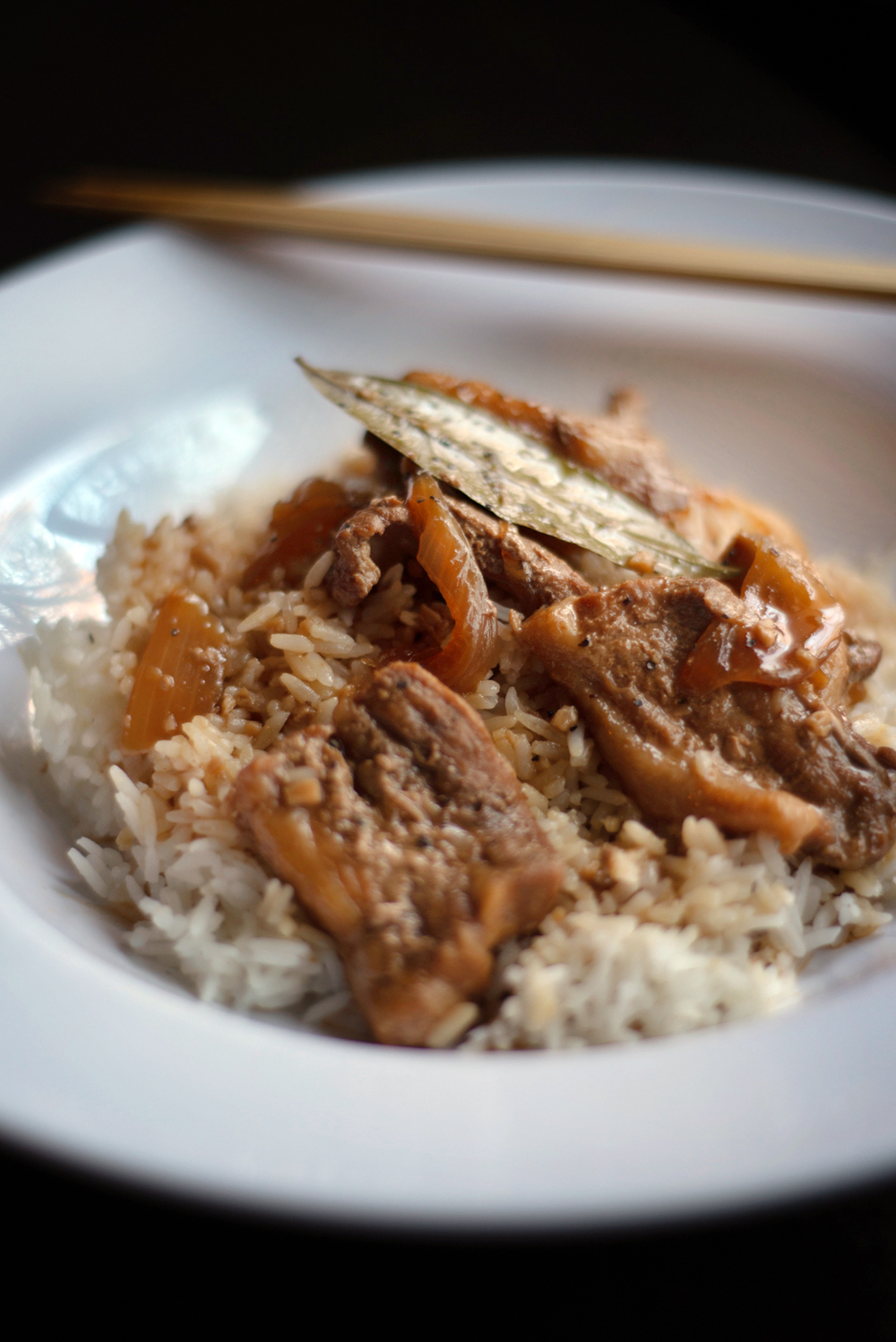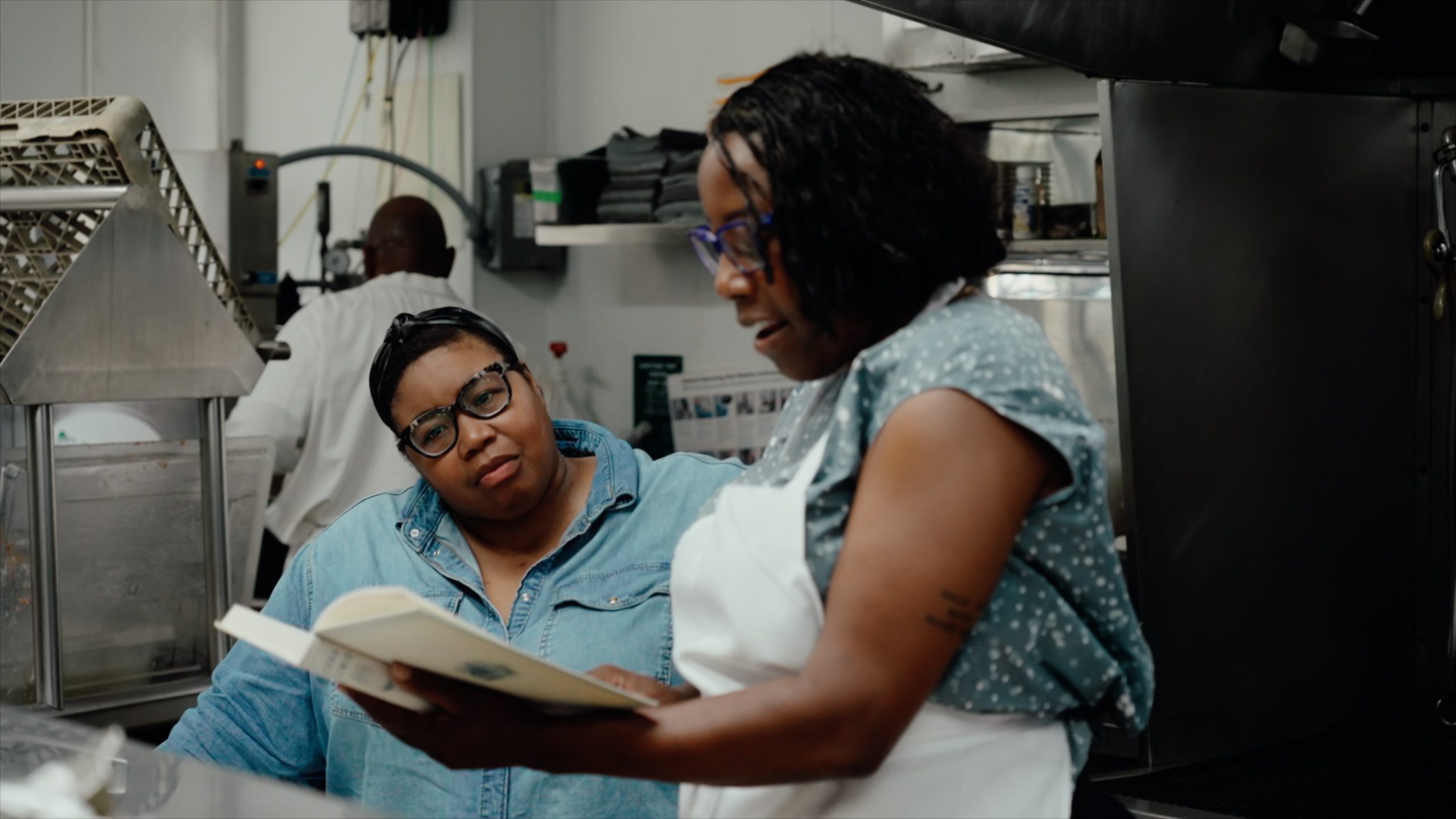
by Chris Jay
This site is funded by tips from readers. Securely support Chris with a tip of $5 or more by clicking “Buy Me a Taco.”
Has it begun to feel as though you’re doing more cooking at home but eating less home cooking?
A few months into the COVID-19 pandemic, 26-year-old Jessica Carr began to feel the same way. She daydreamed of her mother Marietta’s lumpia, pancit, and Filipino baked sweets. Oh, and her spot-on recreation of Chili’s southwestern egg rolls. And her biscuits. (The secret to a good biscuit, Marietta says, is to freeze and grate the butter the night before, then sprinkle the frozen butter flakes into White Lily flour.)
Most of all, Jessica missed her mom’s adobo. Adobo is a cornerstone of Filipino cooking. It involves braising meat (usually pork or chicken) in a fragrant mixture of vinegar, soy sauce and spices.
As the pandemic stretched on, Jessica realized that she wouldn’t be able to wait this thing out. Separated from her parents due to social distancing, she was going to have to learn how to make her mother’s adobo, a dish that she’d grown up eating frequently but had never prepared for herself.
Jessica, who is Filipino-American, grew up in Sumter, South Carolina on an Air Force base, where she was one of only a few Asian students at her elementary school.
“I was always the kid in school who was opening her lunchbox and would have rice and chicken adobo or green curry chicken,” Carr said. “My friends would be like ‘What are you eating?’ I would say: ‘You should try this, I think you’d really like it.’”
Jessica’s mom met her dad, Ken, while he was an Airman stationed in Japan. The two were set up for a blind date by mutual friends. Ken showed up with flowers. After a whirlwind courtship, they were married, and 2 years later, Marietta was pregnant.
The Air Force transferred Ken back to the U.S. He and Marietta drove halfway across the country to introduce his parents to their new daughter-in-law and grandson—an introduction that was unlikely to go smoothly. But Marietta, who had lived a hardscrabble existence back in the Philippines, immediately took up residence in the hearts of Ken’s country-living family.
“My mom remembers the first morning that she spent in Tennessee,” Jessica said. “She woke up at 5 a.m. and went out into the yard with my grandmother, and they killed a chicken together. I don’t think that Southerners and Filipinos really appreciate how much they have in common.”
Over Facetime video chats and text messages, Jessica helped transcribe the pork adobo recipe that follows.



Jessica and Marietta stress the importance of one technique that may feel like a mistake to first-timers: don’t stir the mixture until the vinegar has burned off. You’ll be able to tell when the vinegar has burned off by the smell; when the pot begins to smell like soy sauce, instead of vinegar, that’s when it is ready to be stirred. In order to get this timing right, Jessica said that she had to “learn how to trust my Filipina nose.”
Jessica, who northwest Louisiana locals may know from her stint working as a marketing professional in Bossier City, recently launched an Asian bakery in her adopted hometown of Knoxville, Tennessee. Though launching a food business during a pandemic was never a part of her plan, Jessica’s first few pop-ups have been wildly successful. Girls Gotta Eat Good (like the bakery on Facebook or follow it on Instagram, if you’d like) bakes and sells Filipino sweets including ube rolls, ube cookies, puto, kalamay topped with leche flan, banana lumpia and more.
“I’m at a time in my life when I’m connecting to my roots, and I’m also trying to share that culture with other people who’ve never experienced it,” Jessica said.
So, how did Jessica’s first adobo turn out? To her amazement, it tasted exactly like her mother’s. Jessica was proud of the dish, and texted her mom a photo. Her mother replied that it looked delicious.
“I’m proud of her for keeping the tradition,” Marietta said via email. “I never thought she’d take it and run with it.”

Marietta Carr’s Recipe for Pork Adobo
1 lb of sliced pork belly
4 small cloves of garlic, minced
3/4 cup of onions, sliced
4 bay leaves
1/2 cup white vinegar
1 cup of soy sauce
1 1/2 cups of water
1 tablespoon cornstarch
2 tablespoons sugar
2 tablespoons water
Black pepper to taste
Layer in your pot onions, garlic, and 2 bay leaves then put the pork belly on top. Then, add another layer of onions, garlic and the other 2 bay leaves. Pour white vinegar and soy sauce on top and bring to a boil. Do not stir.
Cook until pork belly is tender and you can not smell a strong vinegar smell from the pot. Once pork belly is cooked, add water and stir. Turn the heat down to a simmer.
In a separate bowl, mix together sugar, cornstarch and water. Add a little bit of the adobo broth to the mixture. Stir it together and add back to the pot. Season with black pepper. Serve over rice and enjoy!
This story was produced independently. If you’d like to support the creation of more stories like this, please consider buying the author a taco or sending him $5 via PayPal. If you’d like to advertise on this site, contact Chris at ChrisJay318@gmail.com.




One thought on “Family Recipe Project: Marietta Carr’s Pork Adobo”
Comments are closed.